Now the Boxster has undergone a similar remake, writes John Simister. It's a predictable event, but one more significant than it first appears.
Of course, the Boxster has nothing like the historical baggage of a 911. Porschophiles of the old school might still regard it as the upstart, the slightly effeminate sports car propping up the bottom of the range and not to be taken very seriously (except, perhaps, for the slightly bonkers Spyder version at the end of the old model's life).
Step back from the stereotype for a moment. The Boxster concept car appeared 20 years ago, which is longer ago than you might have thought. The production one appeared 15 years ago, and was the first mid-engined Porsche production car since the 1970s 914 and the 1950s Spyders and RS models before that, even though mid-mounted engines have been Porsche's pure-race-car norm for decades. So there's historical legitimacy here. It was also the first with water cooling for the flat-six engine. And then there's the Cayman, effectively a Boxster coupé but reckoned by many to be the best-handling Porsche road car ever made.
So with all this genetic strength, the Boxster was due a more assertive personality. One glance at the new one shows the dues have been paid and a strong, separate identity forged. The previous Boxster, originally numbered 986 and evolving into the 987, donated its front end as far as the dashboard and windscreen pillars to the first fully-rebodied, and water-cooled, 911 – model number 996/997. This rationalisation made Porsches much cheaper to build and set the company on a road to financial health which became a motorway with the launch of the Cayenne SUV.
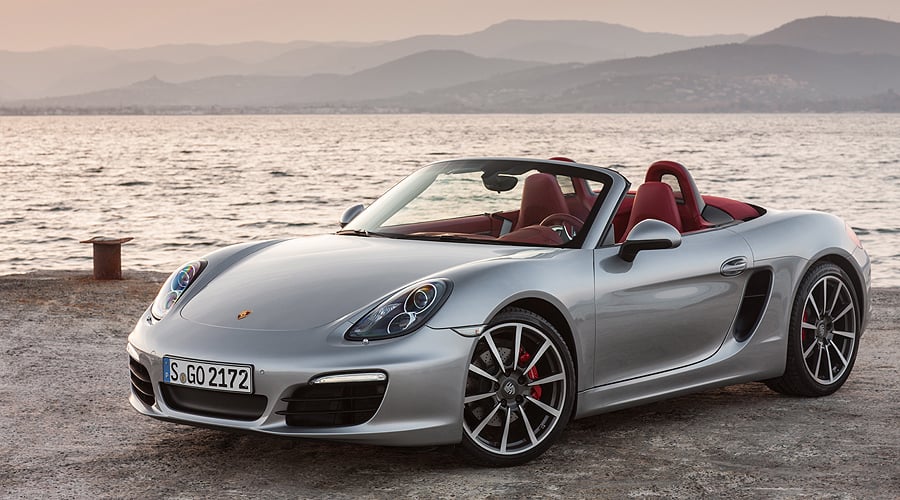
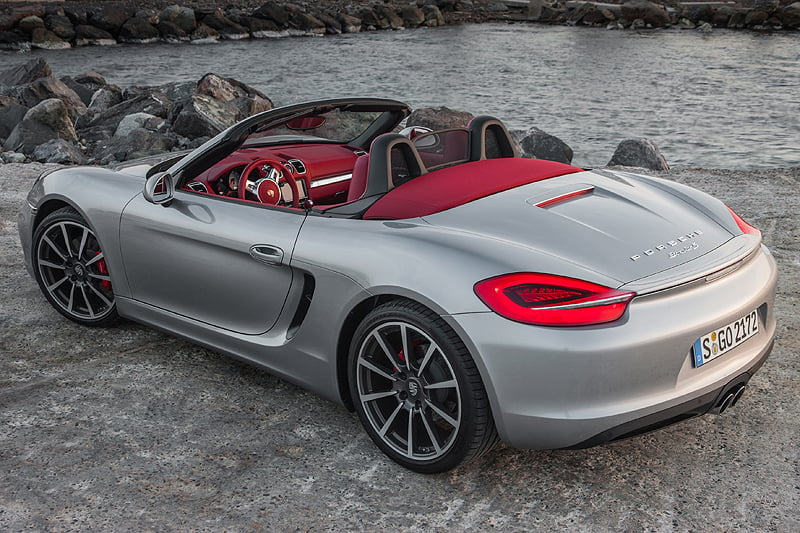
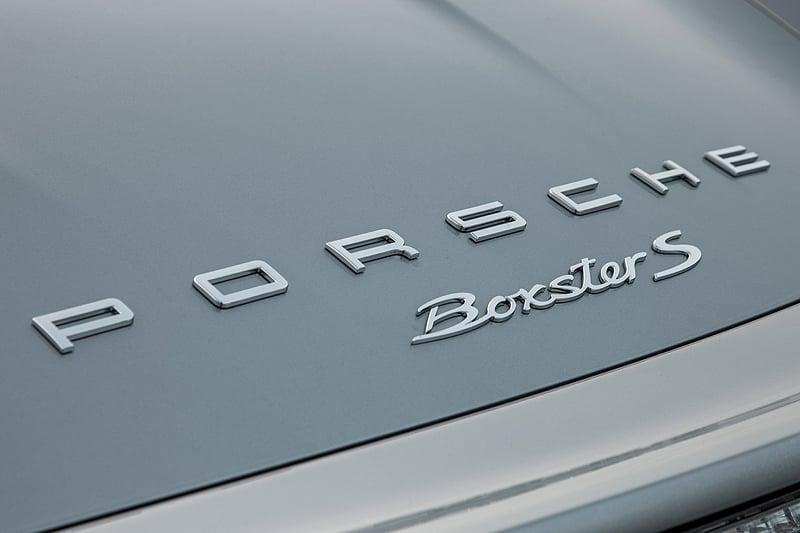
It's the same idea this time around, except that the new 911 (the 991) arrived just before the new Boxster (981) instead of just after. Again, the front end is the same under the skin, although this time the skin panels are all different as are the visible parts of the dashboard. The wheelbase has grown by 60mm, the front track by 40mm and the rear track by 18mm. The windscreen is raked further back and there's less front overhang. The overall effect is no longer of a car which looked able to be driven in either direction; rather it sits with a proper mid-engined stance and no longer appears over-bodied for its (now bigger) wheels.
Various styling motifs help the new presence. The headlights are in vertically-stacked pairs as they were on Porsche's 1960s and 1970s racing cars. The flanks feature deep air-intake channels redolent of the Carrera GT's. The automatically-raising rear spoiler is now part of a lateral, bowed ridge which flows into the tail-lights. There's a muscularity here that was absent before.
Inside, like the 991, the new 981 has a raised, sloping centre console which unfortunately precludes the installation of a proper handbrake. So we have to suffer an electric parking brake in order to bask in glory reflected from the 918 concept car, where this somewhat wrong-headed idea arose. The new dashboard has dramatic-looking air vents with extra louvres heading towards the windscreen. Should a Porsche have this degree of styling embellishment when Porsches have historically peddled purity?
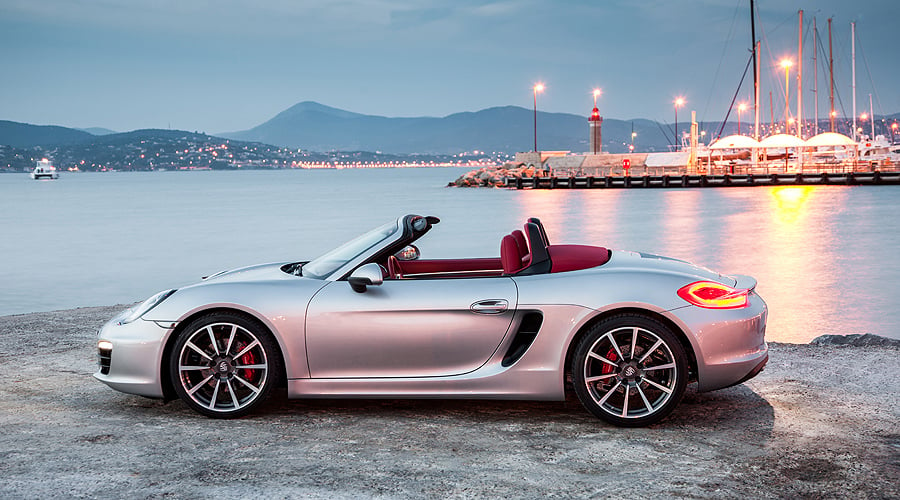
What is undeniably an advantage is a 40 per cent increase in the structure's torsional stiffness, thanks mainly to high-strength steels in vital places, including a boron mix for the sills. The skin panels and the floor are aluminium, and the whole car weighs between 25 and 35kg less than its corresponding predecessor.
You can feel all this almost as soon as you move off, roof stowed after its nine-second burst of powered activity (now with no need to latch or unlatch the header rail clamp manually). I'm in a Boxster S to start with, powered as before by a 3436cc version of the direct-injection flat-six which now generates 315bhp (a 5bhp increase). A six-speed manual gearbox is under my right hand's control. The 991's seven-speeder doesn't make the orientation-reversal and transplant to the Boxster, and I can't say I'm sorry.
The complete absence of any structural shake is one impressive outcome of the Boxster's rebirth. But then there's the new electric power steering, as engineered for the 991. That it reduces official fuel consumption by 0.1 l/100km is not the issue here for Porsche; it represents but a tiny fraction of the new car's economy gains.
R&D chief Wolfgang Hatz says it's simply a better technical solution, giving all the information a driver needs, none of the information a driver doesn't need, and greater 'comfort' and ease of use especially at parking speeds. A comfort gain is also found in the suspension, which has more compliant settings even in the hardest-core Sport Plus mode of the optional Porsche Active Suspension Management.
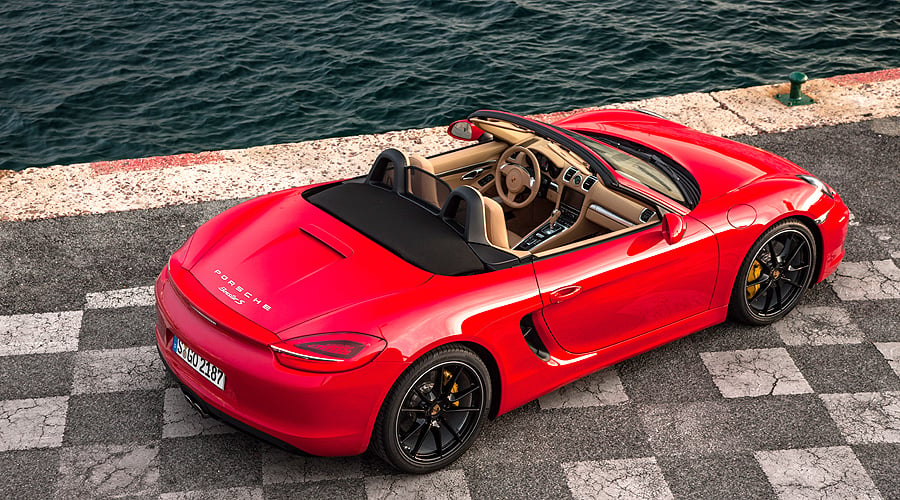
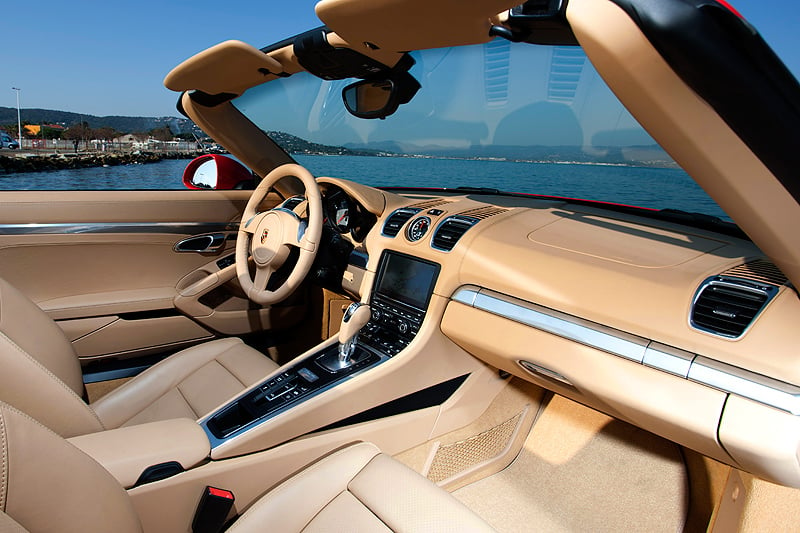
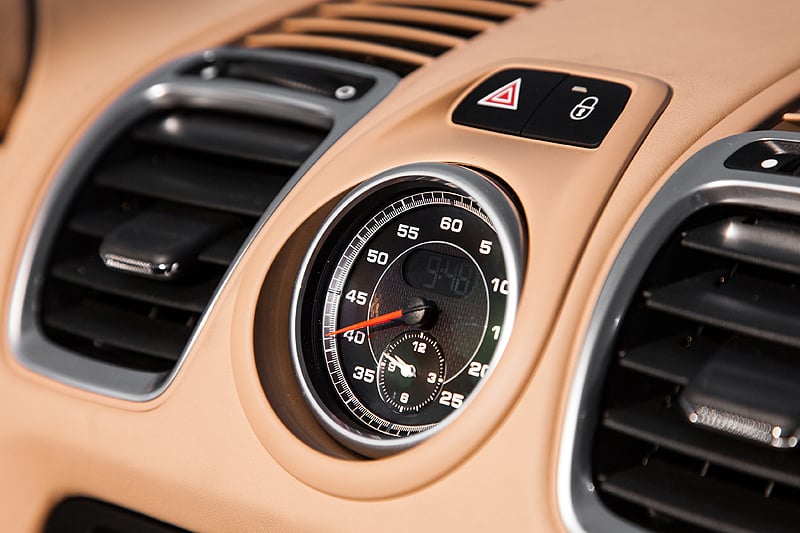
The result of all this? The new Boxster, it must be said, is quite brilliant. It has a precision and a plantedness I only now realise wasn't quite there in the old one, and as an S it has as much pace as you could reasonably need. The induction and exhaust notes are smooth and subdued when ambling, properly Porsche-like when you're trying hard, and the engine is completely smooth and keen to rev when you find the lower-speed pull less than scintillating. A torque plateau of 266lb ft extends from 4500 to 5800rpm.
But… it's that electric-steering thing again. In a Porsche – well, any sensation-centred car, but especially a Porsche – you want to feel the topography of the road surface through your hands, the little ripples and tugs that tell you you're in touch. You don't need them, but they make the difference between real-time telegraphy and mere guidance system.
In normal mode (that is, neither Sport nor Sport Plus), the steering is simply polite, and a little loose-feeling around the straight ahead so the Boxster seems to be less alert than it actually is. So what you do is miss out the middle setting and go to Sport Plus, which adds weight – in a good way, without making it into stodge and simple resistance as many EPAS systems do – and gives the impression of greater precision and greater effect from your cause because you feel you're leaning harder on the outside front wheel. But you also manually switch the dampers back into normal mode, because firmer is counter-productive on the road, even if it's no longer actively unpleasant, as it used to be in a Boxster.
Thus configured, the Boxster S feels great – provided you erase memories of what good Porsche steering used to be like. You can drift the tail gently with ease, the ease and confidence helped by the torque-vectoring system that is another option, and revel in an agility and pointability that the longer wheelbase has done absolutely nothing to harm.
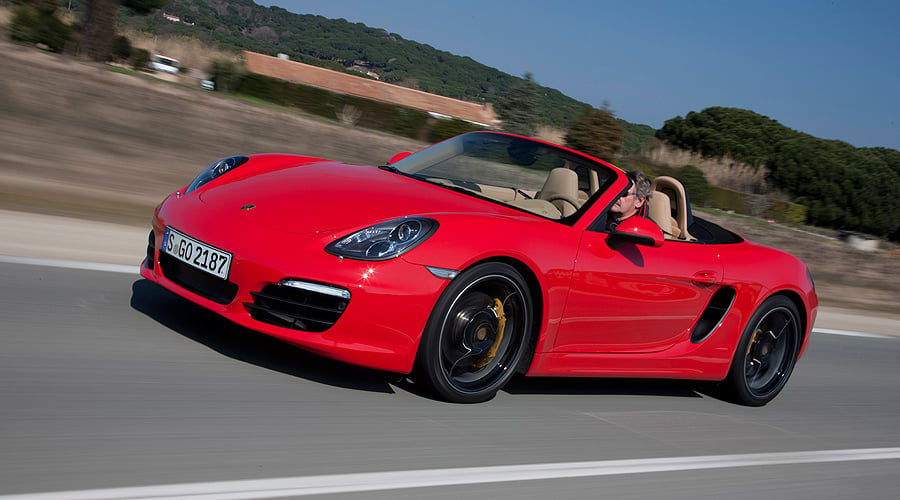

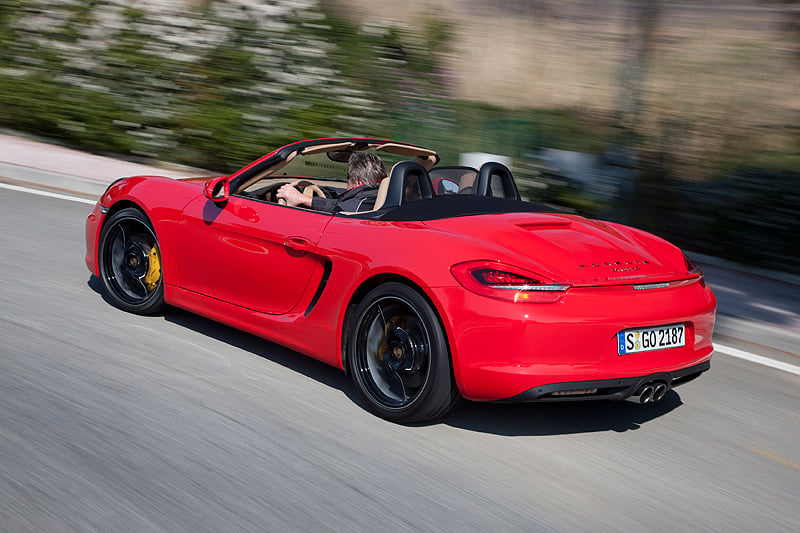
Actually, I think the electric steering feels more natural here than it does in the new 911, perhaps because a mid-engined car has smaller extremes of loadings on the front wheels than a rear-engined one, so the synthesised feel is closer to what you might expect from an old-fashioned hydraulic system. Only a purist (as I suppose I am) could pick holes in it; and with the much-improved ride, and the huge reduction in aural boominess when driving roof-up, the new Boxster is a much better car than the old one in practically every way.
I also tried a PDK example, and found myself liking this brilliantly-honed double-clutch transmission more than I ever have before. In Sport but auto mode, it is uncannily intuitive and its throttle blips are perfection. (In Sport Plus it's too hyperactive, in normal mode it's a bit sleepy.) And I tried the cheaper relation, the Boxster-without-an-S, whose engine has reverted to the 2.7 litres of earlier Boxsters but now has the direct injection. It gives 265bhp and, while it feels clearly less eager than the S, it's still fast enough to be fun.
And so it should be, with – in PDK Sport Plus guise – a 0-62mph time as low as 5.5sec and 164mph top speed. Equivalent figures for the S are 4.8sec and 172mph, which don't sound like the figures of a shrinking-violet sports car to me.
Prices start at £37,589 for the Boxster, £45,384 for the S, and UK sales start on May 5. No rival sports car – Mercedes SLK, BMW Z4, Audi TT RS – gets close to these Boxsters in any meaningful attribute. All of which suggests that the next Cayman, due at the end of the year with production of the current one already ended, should be cosmic.
Photos: Porsche












